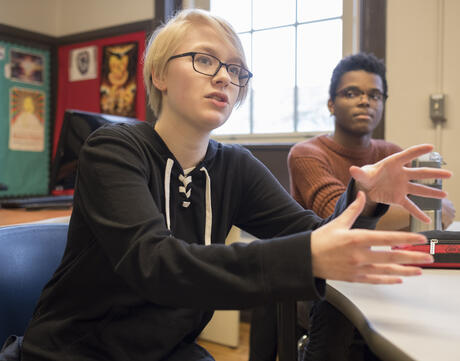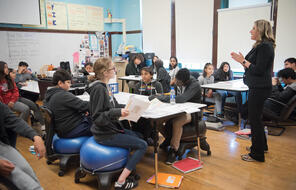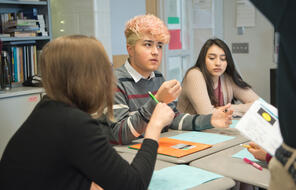
Asking Compelling Questions
Subject
- English & Language Arts
Grade
6–12Language
English — USPublished
Overview
About This Learning Experience
In order to internalize what they are learning, students need to participate in intellectual communities that value speaking and listening as much as reading and writing. Philosopher Hannah Arendt described this imperative: “However much we are affected by the things of the world . . . they become human for us only when we discuss them with our fellows. . . . We humanize what is going on in the world and in ourselves only by speaking of it, and in the course of it we learn to be human.” 1 When students bring their minds, hearts, and consciences to conversations about literature and life, it allows them to broaden their understanding of the text, themselves, and their world. Discussions are richer when students are grappling with questions that matter—questions that are open-ended, intellectually engaging, and transferable to their own lives.
The following learning experiences support text-based, student-centered discussions. They offer compelling questions that invite students to draw evidence from the text to support their thinking, engage in conversation with their peers, and make real-life connections to what they are reading.
- 1Hannah Arendt, Men in Dark Times (Houghton Mifflin Harcourt, 1968), 24–25.
Preparing to Teach
A Note to Teachers
Before using this learning experience, please review the following information to help guide your preparation process.
Procedure
Activities
Materials and Downloads
Quick Downloads
Get Files Via Google
Unlimited Access to Learning. More Added Every Month.
Facing History & Ourselves is designed for educators who want to help students explore identity, think critically, grow emotionally, act ethically, and participate in civic life. It’s hard work, so we’ve developed some go-to professional learning opportunities to help you along the way.
Exploring ELA Text Selection with Julia Torres
On-Demand

Working for Justice, Equity and Civic Agency in Our Schools: A Conversation with Clint Smith
On-Demand

Centering Student Voices to Build Community and Agency
On-Demand













